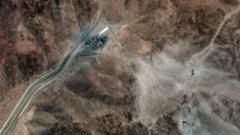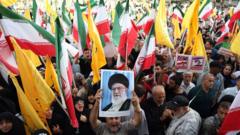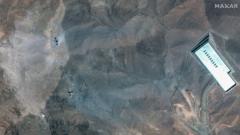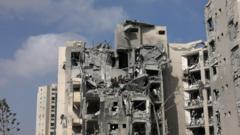The recent leaked Defense Intelligence Agency report suggests that US strikes on Iran's nuclear sites may have only delayed the program’s advancements by months rather than years. As intelligence efforts intensify to assess the damage accurately, the potential for Iran to adapt and reconstitute its capabilities remains a critical concern.
Assessing the Impact of US Strikes on Iran’s Nuclear Program: A Complex Puzzle

Assessing the Impact of US Strikes on Iran’s Nuclear Program: A Complex Puzzle
A new leaked report from the DIA raises questions about the true extent of damage done to Iran's nuclear capabilities, revealing challenges in verifying progress and potential reconstitution of the program.
The Fordo site has long been identified as a focal point for international surveillance and intelligence efforts since its secretive nature came to light in 2009. Recent military engagements, including US strikes, have raised urgent questions about the condition of Iran's nuclear development, as highlighted by a leaked report from the Defence Intelligence Agency (DIA). This assessment suggests that while some capabilities might have been impeded temporarily, the core components of Iran's nuclear program appear largely intact.
The DIA, known for its military intelligence, indicates a low confidence level in the initial evaluations due to the inherent complexities of assessing damage at such a clandestine location. Following the strikes, Chairman of the Joint Chiefs of Staff General Dan Caine emphasized that understanding the extent of the damage inflicted was a process that would unfold over time.
Satellite imagery offers limited insights, often revealing only surface-level damage without confirming the status of the facilities buried deep within the mountains. Multiple bombs were deployed during the strikes, yet the reinforced structures likely prevented catastrophic destruction of the core machinery. The centrifuges, vital for uranium enrichment, may have sustained critical impairments due to the force of the explosions.
To accurately appraise the impact of the strikes, intelligence agencies are expected to rely on an array of advanced technologies. Tools like seismic detectors will help evaluate the magnitude of the underground blasts, while radiation sniffers, which have not detected unusual activity, and LIDAR systems could provide comprehensive mapping of the affected sites. Additionally, intelligence gleaned from informants and intercepted communications will be crucial in piecing together the full scope of the situation.
While US officials maintain that the damage to sites like Fordo could render them temporarily unusable, this does not signal the end of Iran's nuclear aspirations. Early signs suggest that Tehran may have relocated its stockpile of highly enriched uranium, potentially to alternative sites like "pickaxe," further complicating the assessment landscape.
Reconstruction of Iran’s nuclear program may not be immediate, yet the regime's ability to adapt and shift its resources means that the potential remains for accelerated development in the future. Previous Israeli tactics aimed at disrupting scientific leadership have illustrated the ongoing cat-and-mouse nature of this conflict.
As the intelligence community continues to gather and analyze data regarding Iran's nuclear capabilities, the urgency of understanding the implications of the recent strikes will shape future geopolitical strategies. Should evidence emerge indicating Iranian intentions to revive or hasten nuclear development, the potential for renewed conflict in the region could swiftly follow.























